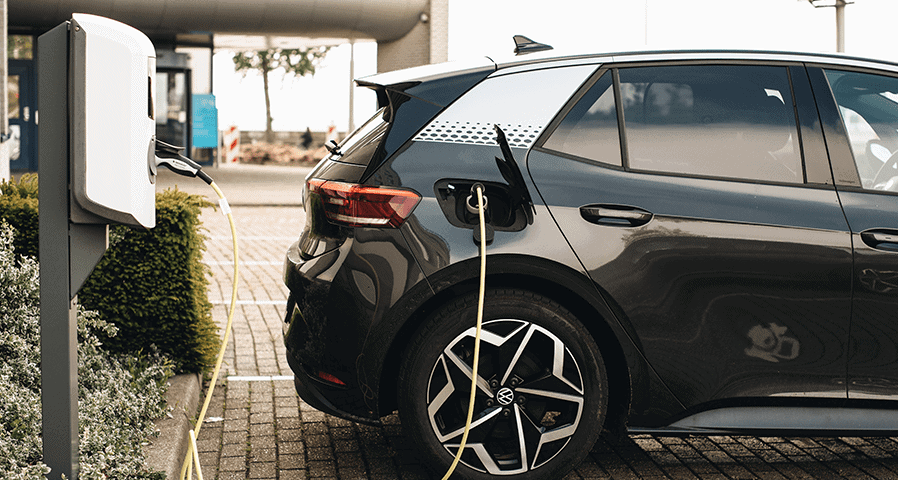You know there are environmental and economic advantages to switching to an electric fleet. Vehicle maintenance and fuel costs go down, and businesses meet sustainability requirements. It can also improve a company’s standing with consumers that prefer to support environmentally conscious businesses.
Switching to an EV fleet takes planning, and here are a few steps to help you launch a successful EV pilot program.
How to Successfully Implement EV for Fleets
Careful planning will help ensure switching to an electric fleet goes smoothly for the company, drivers, and consumers.
1. Pick the Best People for Your Tea
An EV fleet program is only as successful as the people on the team. You want to bring in your best people. It includes the property management team and building’s facilities manager. You will need to work closely with the utility company when it’s time to implement fleet charging stations.
You also want to have a project management team that has people that understand buildouts and how to meet the changing electrical demand.
2. Choose Your Vehicles and Drivers
Choose the vehicles for your EV fleet based on route mileage and load weight. Different types of electric vehicles can travel farther before needing a charge. You don’t want your driver to have to stop at a commercial charging station while on their delivery route.
Picking the right drivers is just as important as choosing the appropriate electric vehicles. You want experienced drivers that are familiar with the routes. You also want to pick drivers that can provide you with helpful feedback so you can finetune the pilot program.
The success of the EV fleet pilot program also depends on your electric partner. It is best to work with one vendor, instead of multiple charging partners. Sticking with one electric brand will make it easier to implement the charging infrastructure. It saves you time and money in the end.
Have you seen our article on EV and Mixed-Fuel Fleets – A Real World Transition to EV? This article walks you through setting goals for your EV piolet program and well as real world consideration you need to discuss before initiating your EV program.
3. Find Out How Much Electrical Power is Needed
Finding out how much more electrical power is needed to keep an EV fleet charged is important. You don’t want to overload your current system.
Determine how much power the business currently uses and estimate how many EVs will be in the fleet. Find out how much energy these vehicles consume and add it to your estimations.
Remember these are estimates and will probably change as you transition over to an EV fleet. However, you need a starting point for the pilot program. Changes to your electrical needs can include not all vehicles charging at the same time. Electrical needs for vehicles can also change as technology advances. You may not need as much to keep the battery charged.
4. Upgrade the Electrical Supply
When you have a general idea of the amount of electricity you need for the EV pilot program, talk to an electrical services provider that specializes in EV charging. You may also want to plan for the future and install trenching and conduits so you’re ready to add more EVs to your fleet. It will save time and money in the future.
Don’t forget to ask the electrical service provider about incentives and grants. Many states offer incentives and rebates to companies that transition to EV fleets.
You don’t want to put this step off, it is usually the most time-consuming. It can take a while for the permits and for the construction work to be completed. You also want to warn drivers that changes will be made to the staging area. Some lanes may be temporarily closed during construction.
5. Install EV Fleet Charging Stations
When the electrical services provider has finished supplying your business with additional power, it’s time to install the fleet charging stations. Once the charging stations are in, you need to set up the software.
The software and hardware in the vehicles and charging stations must be compatible for EV batteries to charge. Setting up the software also allows you to track and manage energy usage in real-time. You’ll have a better idea of how well the EV fleet pilot program is going.
Did you know that Apogee Charging Solutions has been in the project management and electrical service business for over 30 years? We have the necessary personnel needed to implement any EV charging project from start to finish. To speak with one of our EV charging specialists, you can schedule a call that fits your needs by clicking the button below.
6. Charge the EV and Drive
After the EV fleet charging stations are installed and you’ve acquired the electric vehicles, you’re ready to start the pilot program.
Track the data from the EV software and get plenty of feedback from drivers. Make any necessary changes to smooth out any problems and take another look at how the pilot program is progressing.
7. Expand Your Electric Fleet
With careful planning, open lines of communications with your team and drivers, along with the electrical service provider, you are ready to start expanding your EV fleet.
Don’t rush the process, it takes time. You also don’t want to ignore any concerns from your drivers. Before long, you will have successfully transitioned to a sustainable EV fleet.
With Apogee Charging Solutions you get the benefit of an experienced electrical service provider along with an EV supplier and installer. We offer a fully turn-key services to simplify your EV transition. To speak with one of our electrical and EV charger specialist, call 484-816-2076 or email [email protected] or you can Schedule a Call by clicking the button below.








0 Comments